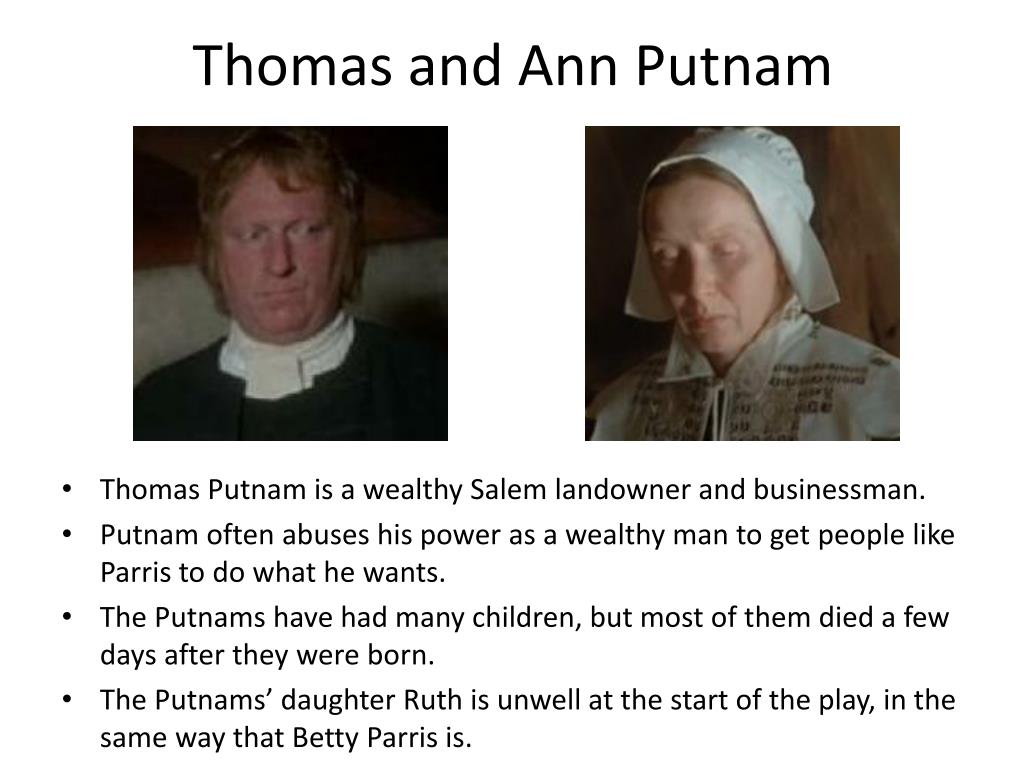

Proctor tells Danforth that Mary Warren did not see spirits. Giles later takes Thomas to court regarding the issue.Proctor and Mary Warren enter the vestry room. He uses the trials to get the other villagers' land, such as Giles Corey's. Thomas twists Reverend Parris to make him on his side, urging him to see that it is witchcraft that is making Salem go mad. He appears in Act 1 and is apparent during Act 3. They both have lost seven children in childbirth, and pointed to witchcraft as the cause of it. In the 1953 play, The Crucible, by Arthur Miller, Thomas Putnam is married to Ann Putnam, and together have a daughter, Ruth Putnam, who is afflicted with a grave illness, similar to that of Betty Parris. died in 1699, leaving 10 children orphans, two children having predeceased them. He is responsible for the accusations of 43 people, and his daughter is responsible for 62. Putnam, his wife Ann, and their daughter Ann all levied accusations of witchcraft, many of them against extended members of the Porter family, and testified at the trials. His half-brother, Joseph, who had benefited most from their father's estate, married into the rival Porter family, fueling ill will between the clans. He was excluded from major inheritances by both his father and father-in-law. His father was one of Salem's wealthiest residents. Thomas served in the military and held the rang of Sergeant. They had 12 children: Ann, Thomas, Elizabeth, Ebenzer, Ebenezer, Deliverance, Timothy, Experience, Abigail, Susanna, Seth, and two who died young. She was born at Salem Village on June 15, 1661, the youngest daughter of George and Elizabeth Carr. He married Ann Carr on September 25, 1675, at Salem Village. He was baptized on February 16, 1652, at the First Church of Salem.

(1615–1686) and his first wife, Ann Holyoke. Putnam was born on Ma(new style March 12, 1651) in Salem Village, Massachusetts Bay Colony, a son of Lt. Thomas Putnam (Ma – June 3, 1699) was a member of the Putnam family and a resident of Salem Village (present-day Danvers, Massachusetts) and a significant accuser in the notorious 1692 Salem witch trials.


 0 kommentar(er)
0 kommentar(er)
